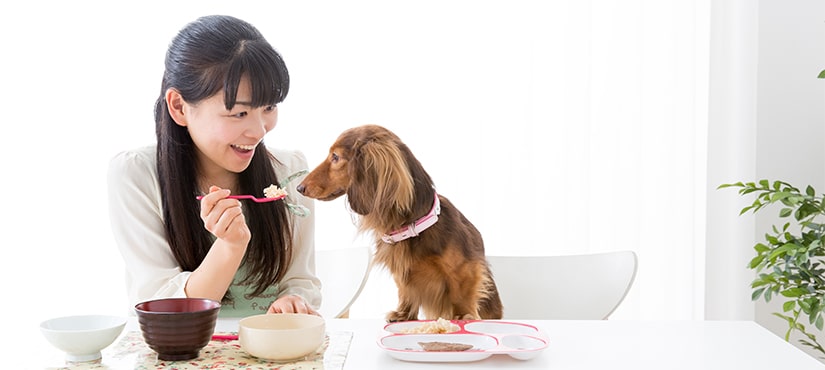Over the past couple of years, there has been a grain-free commercial pet food movement among pet food brands, breeders, trainers, and pet parents. Since rice is often an ingredient in pet food, you may be questioning whether your pup should be eating grains like rice?
Regarding the different types of rice your dog can have, including wild rice, yellow rice, white or brown rice? Read on to learn more about how white or brown rice can be beneficial for your pup, especially when served with plain boiled organic chicken with veggies. In this blog, we’re going to discuss the nutritional benefits and safety of rice for dogs.
Is Rice Healthy for Your Dog?
Dogs enjoy rice, and it’s healthy for them to eat. Sometimes white rice is an excellent alternative to commercial fillers that have little nutritional value. Keep in mind that many dogs develop grain allergies, which is one of the main reasons people switch to feeding grain-free dog food.
If your dog can tolerate grain and does not get an allergic reaction, then rice and chicken or rice and fish are often recommended. So, all in all, if your dog can digest rice well, it can be fed to him but needs to be boiled extensively to allow for your dog’s digestive system to break it down. Because rice is a strong diuretic, dogs will tend to urinate more often. Combining rice with organic veggies and boiled chicken works too if your pup has a bout of diarrhea.
Adding Rice to Your Dog’s Diet
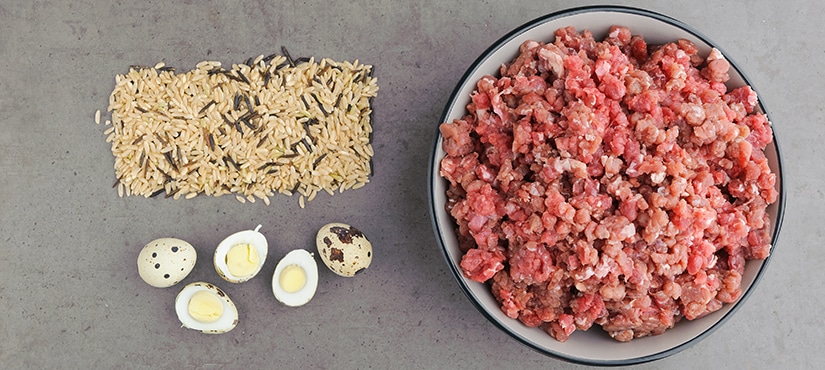
The simplest way of adding rice to your dog’s diet is by mixing it with your wet or dry dog food. You can also add it to plain boiled deboned chicken with veggies or with cooked lean meat and veggies. For large dogs, you can mix them all together once cooled. For smaller dog breeds, it may be easier to puree them first in the blender.
If you opt to cook your dog’s meals first, make sure you’re feeding your pup a well-balanced high-quality dog food recipe. You should always discuss switching to home-cooked meals with your vet. Remember that you need to leave out salt, seasonings, onions, and garlic when cooking for your dog.
Potential Benefits of Rice for Dogs
Rice is part of a group called grains. (sometimes called cereals). Grains are grass seeds that are grown and harvested for consumption by people and sometimes pets. Grains also include quinoa, bulgar wheat, oats, oatmeal, corn, millet, and barley. Because not all grains have the same nutritional value, with quinoa high in protein and bulgar being fiber-rich, you’ll need to check what nutrients are provided by the ingredients you feed your pup and keep in mind that some dogs do better with a grain-free diet. If you have questions about nutrition, it’s best to reach out to your vet.
The American Kennel Club (AKC) adds that “We use rice as a carb source when dogs are on a bland diet after a GI upset,” says Dr. Steve Weinberg, DVM and medical director/CEO 911Vets, a mobile veterinary service in the Los Angeles area. “Rice helps to bind the stool in cases of diarrhea.”
Vets never recommend brown rice for dogs suffering from gastrointestinal issues, like diarrhea. White rice is usually recommended because dogs need starch. Yet white rice has a higher glycemic index than brown rice and may increase blood sugar levels. If your dog is diabetic, you can still feed him a little white rice, if needed, but you shouldn’t provide it every day.
AKC explains that “Due to how brown and white rice is processed, brown rice can be harder for a dog to digest because it is not as processed. “Brown rice has a seed coat where the nutrients are stored,” explains Dr. Carly Fox, DVM, a staff veterinarian at New York City’s Animal Medical Center. “That coat is missing from white rice, resulting in less nutritional content.”
Can Dogs Eat Rice?
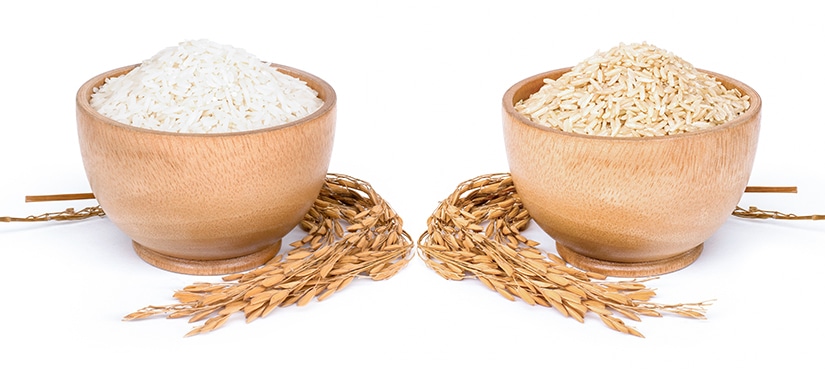
You already know that rice is a carbohydrate and may be bad for your dog’s diet, but there are times when your dog can benefit from a bland bowl of cooked rice with boiled chicken. This is when he has diarrhea. A simple bowl of steamed rice may be the quickest way to help your dog feel better, so he doesn’t have to suffer.
4 Reasons You Can Feed Your Dog Brown Rice

- Upset Tummy: You can feed your dog cooked brown rice if he has an upset stomach. It’s easy to digest and will give your dog energy when she’s sick.
- Older Dogs: You can feed your senior dog cooked brown rice as a protein because it’s easier for an adult dog to digest, especially if your dog has stomach problems.
- Weight Gain: You can add steamed brown rice to add calories to your dog’s diet if your dog needs to increase her body weight.
- Variety: You can prevent your dog from food allergies by adding steamed brown rice for variety. Brown rice gives your dog the nutrients he needs for a healthy diet.
3 Reasons to Feed Brown Rice to Your Dog
- Nutrients: Brown rice has more vitamins, minerals, and fiber. Cooked brown rice is easier for your dog to digest and absorb.
- Cost: Brown rice can be added to your dog food 2 or 3 times a week.
- Constipation: Brown rice can help your constipated dog because it’s high in fiber.
Note: Your dog may feel full and energized from cooked brown rice, but your dog won’t get enough protein. You should keep the amount of grain foods like brown rice less than 30% of your dog’s diet.
When to Feed Your Dog White Rice
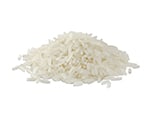
- Diarrhea: To clean out your dog’s intestinal tract, you can feed your dog cooked white rice.
- Digestion: White rice is easier to digest than brown rice because the phytic acid in brown rice can prevent minerals’ absorption.
How to Prepare a Rice and Chicken Dish for Your Dog?
- Buy the best quality organic boneless chicken and a bag of short or long-grain white rice.
- Boil the chicken for 30 minutes to make sure it’s cooked all the way through.
- Remove the chicken from broth to cool on a platter.
- Skim the fat off of the chicken broth and bring it to a boil.
- Add 1 cup of white rice to the boiling broth, return to boil, and lower to a simmer with a tight lid on your pan for 20 minutes.
- Mix cooked chicken with steamed rice and cool to room temperature.
Final Thoughts
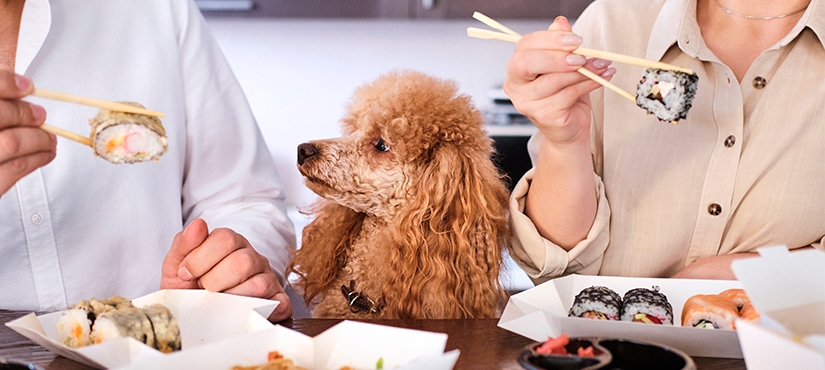
Many dogs suffer from food allergies, otherwise known as cutaneous adverse reactions. Food allergies start up when your pup’s immune system mounts an attack against an ingredient in an ingested food.
If you feel that your dog has a food allergy, reach out to your vet. Immune systems are not created equal so that each dog may have different diet requirements. All food allergies need time and patience to work through. After reaching out to your vet, you’ll need to put your dog on an elimination diet.
Dogs suffering from diarrhea, excessive gas, or pancreatic issues may benefit from more easily digestible diets than standard maintenance diets. As with all new food you introduce into your dog’s diet, consult your veterinarian first and then start slowly.
